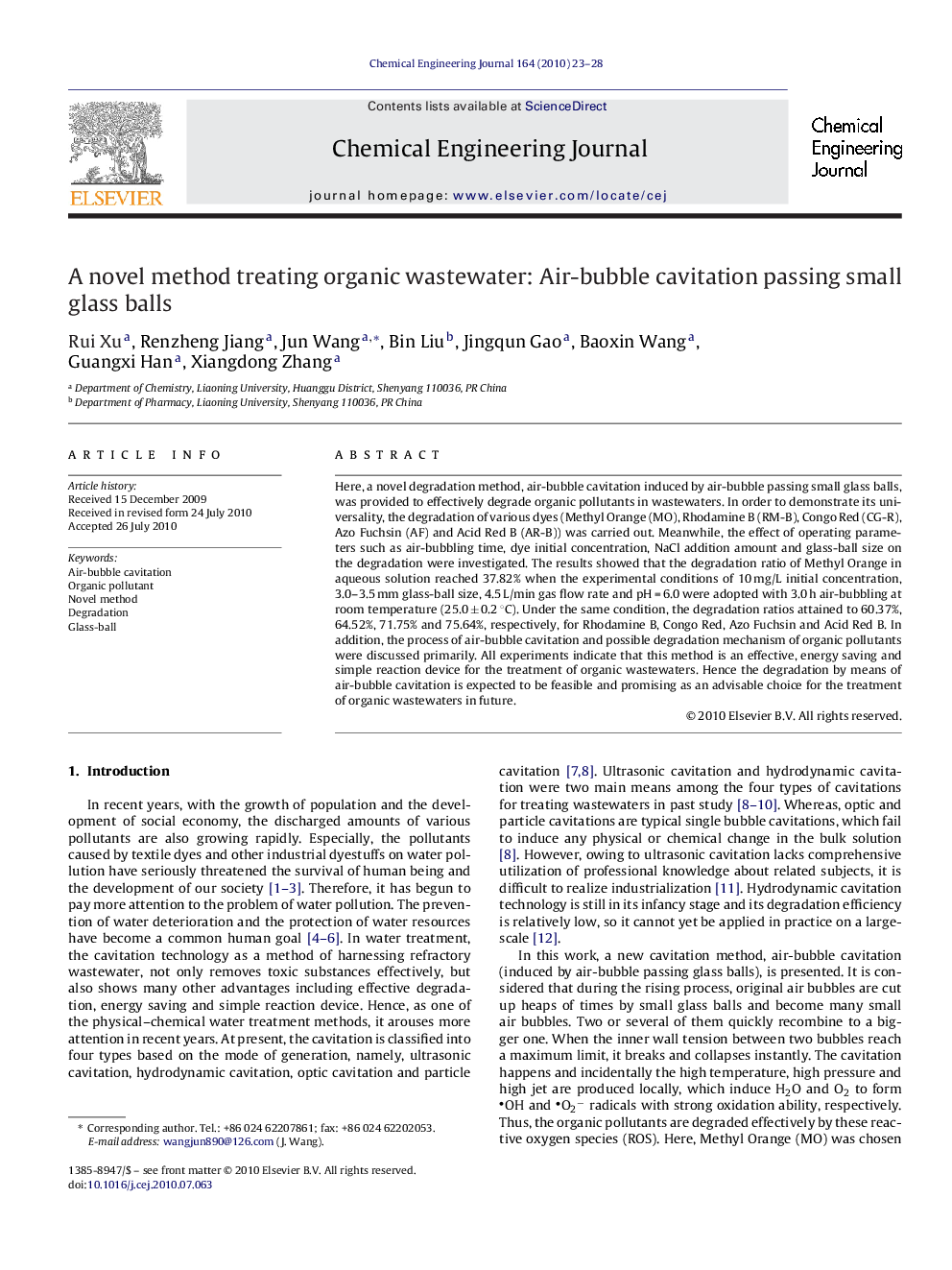| Article ID | Journal | Published Year | Pages | File Type |
|---|---|---|---|---|
| 151923 | Chemical Engineering Journal | 2010 | 6 Pages |
Here, a novel degradation method, air-bubble cavitation induced by air-bubble passing small glass balls, was provided to effectively degrade organic pollutants in wastewaters. In order to demonstrate its universality, the degradation of various dyes (Methyl Orange (MO), Rhodamine B (RM-B), Congo Red (CG-R), Azo Fuchsin (AF) and Acid Red B (AR-B)) was carried out. Meanwhile, the effect of operating parameters such as air-bubbling time, dye initial concentration, NaCl addition amount and glass-ball size on the degradation were investigated. The results showed that the degradation ratio of Methyl Orange in aqueous solution reached 37.82% when the experimental conditions of 10 mg/L initial concentration, 3.0–3.5 mm glass-ball size, 4.5 L/min gas flow rate and pH = 6.0 were adopted with 3.0 h air-bubbling at room temperature (25.0 ± 0.2 °C). Under the same condition, the degradation ratios attained to 60.37%, 64.52%, 71.75% and 75.64%, respectively, for Rhodamine B, Congo Red, Azo Fuchsin and Acid Red B. In addition, the process of air-bubble cavitation and possible degradation mechanism of organic pollutants were discussed primarily. All experiments indicate that this method is an effective, energy saving and simple reaction device for the treatment of organic wastewaters. Hence the degradation by means of air-bubble cavitation is expected to be feasible and promising as an advisable choice for the treatment of organic wastewaters in future.
